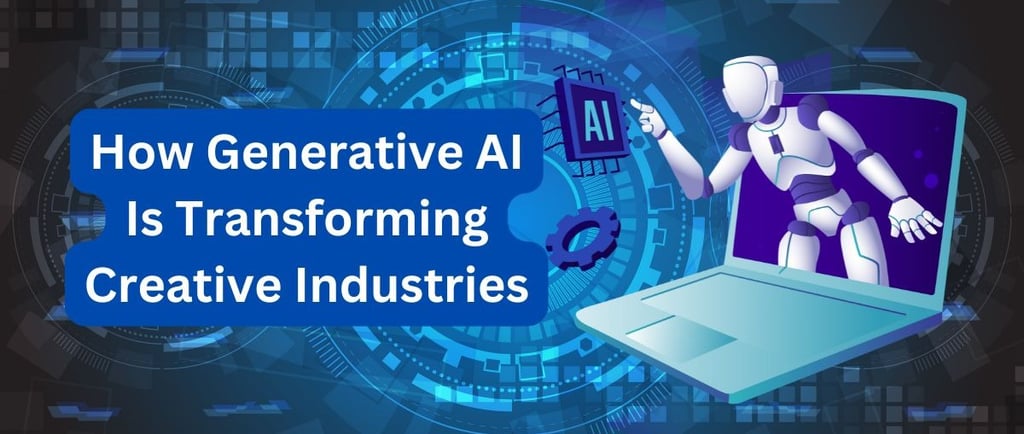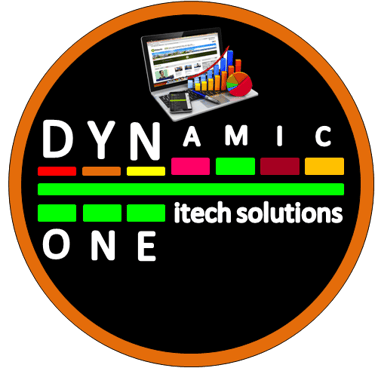How Generative AI Is Transforming Creative Industries
11/10/20253 min read


How Generative AI Is Transforming Creative Industries
Introduction
For decades, creativity was seen as an exclusively human domain — something machines could never replicate. But with the rise of Generative AI (GenAI), that perception is rapidly changing. From digital art and music to film production and fashion design, AI-powered tools are redefining what it means to create. Generative AI doesn’t just assist artists; it’s becoming a true collaborator, helping to push the boundaries of imagination and innovation.
What Is Generative AI?
Generative AI refers to algorithms that can generate new content, such as text, images, music, video, or even code, by learning patterns from massive datasets. Popular tools like ChatGPT, DALL·E, Midjourney, and Runway exemplify this technology, using machine learning models to produce creative outputs that often rival human work.
At its core, generative AI works by identifying patterns in data, learning from them, and then using that knowledge to produce new, original material that fits the same style or context.
1. Revolutionizing Visual Arts
Visual artists are among the first to experience the full impact of generative AI. Platforms like Midjourney and DALL·E allow creators to turn text prompts into detailed, high-resolution artwork in seconds.
Speed and accessibility: What once required hours of manual effort can now be achieved in minutes.
New creative possibilities: Artists can experiment with styles, colors, and compositions that might be difficult or impossible using traditional tools.
Collaboration, not replacement: Many artists use AI to brainstorm ideas or overcome creative blocks, blending machine suggestions with their human touch.
“Generative AI has become my digital sketchbook — it helps me visualize ideas I didn’t even know I had.” – A digital artist
2. AI in Music and Audio Production
In music, AI tools like AIVA, Amper Music, and Suno are composing symphonies, producing beats, and even writing lyrics. These tools enable musicians to:
Generate background scores for videos or games.
Experiment with new genres and soundscapes.
Overcome creative ruts by providing melodic or rhythmic inspiration.
However, the rise of AI-generated music also sparks questions about authorship and copyright — who owns a song made by an algorithm?
3. Film, Animation, and Gaming
Generative AI is changing how movies, animations, and games are made.
Scriptwriting: AI models help writers draft storylines and dialogues faster.
VFX and animation: Tools like Runway and Pika Labs can generate realistic visuals or scenes with minimal manual editing.
Character design: Game developers are using AI to design characters, environments, and entire story arcs dynamically.
For studios, AI means lower production costs and faster content cycles, allowing smaller teams to produce high-quality projects that once required massive budgets.
4. Generative AI in Fashion and Design
In the fashion industry, AI is inspiring new collections by analyzing trends and generating fresh design ideas. Designers use AI tools to:
Predict next season’s colors and styles.
Create virtual prototypes before physical production.
Personalize fashion based on consumer data.
For example, brands like Tommy Hilfiger and Stitch Fix are already leveraging AI-driven design to speed up innovation while reducing waste.
5. Publishing, Writing, and Marketing
Writers and marketers are embracing generative AI for content creation, from blog posts to ad copy. Tools like ChatGPT and Jasper help produce ideas, refine tone, and maintain consistency across campaigns.
Writers: Use AI as a co-author for brainstorming and editing.
Marketers: Generate multiple ad variations in seconds.
Publishers: Automate metadata and SEO optimization to increase visibility.
While some fear that AI might replace human writers, most professionals see it as a productivity amplifier, not a substitute for creativity and emotion.
6. Ethical and Creative Challenges
Despite its potential, generative AI raises important ethical and creative questions:
Authenticity: Can AI-generated art truly be called “creative”?
Copyright: Who owns AI-created work — the user, the AI company, or the dataset’s original artists?
Job displacement: Will creative jobs disappear or simply evolve?
These questions highlight the need for clear regulations and ethical frameworks to ensure AI enhances creativity rather than undermines it.
7. The Future of Creative Collaboration
The future of generative AI in the creative world isn’t about replacing artists — it’s about redefining collaboration. The most exciting potential lies in human–AI partnerships, where machines handle repetitive tasks and humans focus on storytelling, emotion, and innovation.
Generative AI will likely become as common a tool as Photoshop or Pro Tools — a digital assistant that expands what creators can imagine and produce.
Contact Us
Our Services
Quick Links
Dynamic One
0332-6444877
0318-6444878
Muhammad Arif
© 2025 Dynamicone.net All Rights Reserved!


